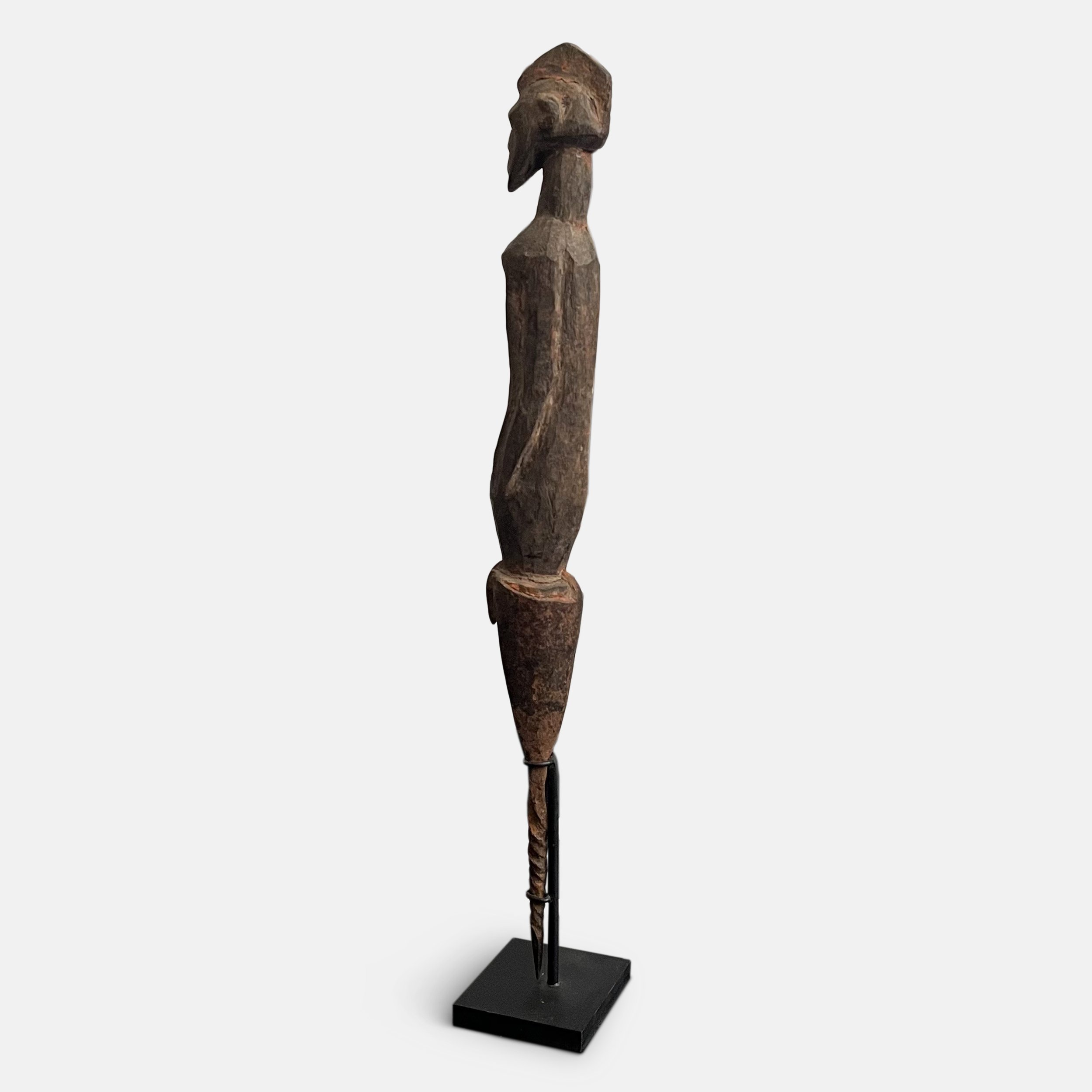 Image 1 of 10
Image 1 of 10

 Image 2 of 10
Image 2 of 10

 Image 3 of 10
Image 3 of 10

 Image 4 of 10
Image 4 of 10

 Image 5 of 10
Image 5 of 10

 Image 6 of 10
Image 6 of 10

 Image 7 of 10
Image 7 of 10

 Image 8 of 10
Image 8 of 10

 Image 9 of 10
Image 9 of 10

 Image 10 of 10
Image 10 of 10











Chamba Statue, Nigeria - Early 20th Century
A small, columnar, spiked statue in the form of a male figure, known as a ‘Tau-Wandoa’ (female statues are known as ‘Tau-Kendoa’), made from hardwood and with a crafted iron stake allowing it to be driven into the ground. Made by the Chamba people south of the Benue River in Nigeria during the early 20th century, the statue has a deep, aged patina and evidence of encrusted earth applied decoratively, as is common in Chamba figures. The face is abstract but suggested, with a crested hairstyle, and the body is staff-like, with slightly bent arms close to the sides and a hollowed-out abdominal cavity. The spiked statue would have been identified diffusely with ancestral spirits, providing a point of address through which they could be approached formally and ritually with offerings and requests.
Literature: ‘Central Nigeria Unmasked: Arts of the Benue River Valley’, R. Fardon, 2011.
Dimensions:
Height: 16.93 in (43 cm)
Width: 1.78 in (4.5 cm)
Depth: 1.97 in (5 cm)
A small, columnar, spiked statue in the form of a male figure, known as a ‘Tau-Wandoa’ (female statues are known as ‘Tau-Kendoa’), made from hardwood and with a crafted iron stake allowing it to be driven into the ground. Made by the Chamba people south of the Benue River in Nigeria during the early 20th century, the statue has a deep, aged patina and evidence of encrusted earth applied decoratively, as is common in Chamba figures. The face is abstract but suggested, with a crested hairstyle, and the body is staff-like, with slightly bent arms close to the sides and a hollowed-out abdominal cavity. The spiked statue would have been identified diffusely with ancestral spirits, providing a point of address through which they could be approached formally and ritually with offerings and requests.
Literature: ‘Central Nigeria Unmasked: Arts of the Benue River Valley’, R. Fardon, 2011.
Dimensions:
Height: 16.93 in (43 cm)
Width: 1.78 in (4.5 cm)
Depth: 1.97 in (5 cm)
A small, columnar, spiked statue in the form of a male figure, known as a ‘Tau-Wandoa’ (female statues are known as ‘Tau-Kendoa’), made from hardwood and with a crafted iron stake allowing it to be driven into the ground. Made by the Chamba people south of the Benue River in Nigeria during the early 20th century, the statue has a deep, aged patina and evidence of encrusted earth applied decoratively, as is common in Chamba figures. The face is abstract but suggested, with a crested hairstyle, and the body is staff-like, with slightly bent arms close to the sides and a hollowed-out abdominal cavity. The spiked statue would have been identified diffusely with ancestral spirits, providing a point of address through which they could be approached formally and ritually with offerings and requests.
Literature: ‘Central Nigeria Unmasked: Arts of the Benue River Valley’, R. Fardon, 2011.
Dimensions:
Height: 16.93 in (43 cm)
Width: 1.78 in (4.5 cm)
Depth: 1.97 in (5 cm)
